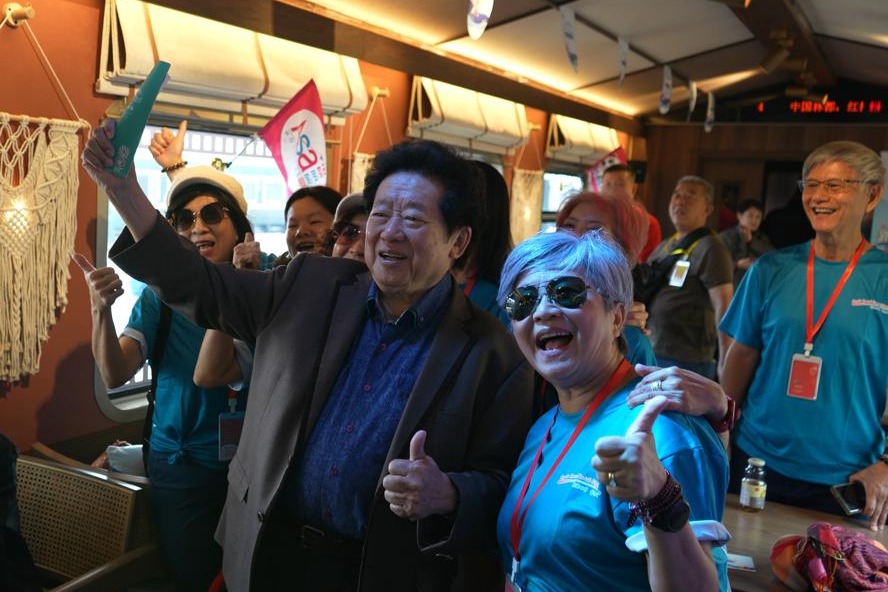Five milestone amendments of the Party Constitution

The Constitution of the Communist Party of China (CPC) is the most fundamental law for the Party and legally stands above any other Party documents and guidelines.
Throughout the CPC's 90-year-long history, there have been five milestones in amending its Constitution.
The first milestone was the CPC's first official Constitution drawn up during its Second National Congress in July 1922. The CPC was officially founded in July 1921 at its First National Congress.
This Constitution was formulated in accordance with Marxist theory while taking into consideration CPC's first-year working experience and the Party-building experience of the Communist Party of the Soviet Union. It set principles for inner-party activities and structures, and was divided into five parts concerning the Party's membership, organization, meeting system, discipline and annex. It is centered on the creation of tight Party organizations at its various levels and the strengthening of discipline.
The second milestone included the Party system set by the Fifth National Congress of the CPC in the amended Party Constitution.
In April of 1927, CPC convened its Fifth National Congress and amended the Party Constitution. Nine new chapters were added to the previous existing six parts. The new Party Constitution signified the birth of a nation-wide Marxist party during the massive revolutionary storm of 1927.
First of all, the new Constitution clarified that the Party was guided by "democratic centralism," and that both the National Congress and the Central Committee elected by it, form its highest leading bodies.
Second, a Central Committee system was established. The Constitution stipulated that the Party’s highest organization is the National Congress of the CPC; that the National Congress elects the Central Committee which serves as the highest organization of the Party as well as "carries out and directs Party affairs and policies" when the National Congress is not in session; that "the Central Committee elects a formal member of the Committee as its General-Secretary and several other formal members to form a Political Bureau in order to direct all the political work in the country"; that the Central Committee elects several of its members as alternative members of the Political Bureau; that the Political Bureau recommends some of its members to form a Standing Committee to handle daily affairs of the Party. As a result, the Fifth National Congress introduced the Political Bureau.
On a third note, the Constitution stated: "In order to consolidate the Party's uniformity and authority, national or provincial congresses elect some of their members to form central or provincial commissions for disciplinary inspection." The Constitution stipulated that the central or provincial Party committees shall not annul the decisions made by central or provincial commissions for disciplinary inspection; that the decisions made by central or provincial commissions for disciplinary inspections go to effect and are implemented only after they are approved by central or provincial Party committees; that if central or provincial commissions for disciplinary inspection cannot agree on a decision with central or provincial Party committees, the case should be handed over to a joint board made up of members from responsible commissions and committees; if the joint board still cannot come to a decision, the case should be submitted to provincial or national Party congress.
The third milestone was the establishment of a guiding ideology during the Seventh National Congress of the CPC.
At this congress in June 1945, the Party Constitution was amended once more and adopted Mao Zedong Thought as the Party's guiding ideology.
Of course, Marxism forms the action guide for the CPC but Mao Zedong Thought is the outcome of applying Marxism to China's reality. At the congress, Liu Shaoqi elaborated on the theoretical system, origin and innovation of Mao Zedong Thought in a report. Later, a new Constitution was passed by the congress, stating: "The Communist Party of China adopts Mao Zedong Thought, a thought of integrating tenets of Marxism-Leninism with the concrete practice of Chinese revolution, as its guide to all the work, and opposes any form of dogmatism and empiricism." Mao Zedong Thought has been the guiding ideology of the Party ever since.
The fourth milestone was the Constitution amendment at the 12th National Congress of the CPC in 1982 which corrected many leftist mistakes that the Party had previously made.
The new Constitution no longer described the CPC as a political party for class struggle. Instead, it said: "The Communist Party of China is the vanguard of the Chinese working class and the loyal representative of all peoples' interests of China. It is the core of the leadership for the cause of socialism with Chinese characteristics."
In the new Constitution, Mao Zedong Thought was no longer described as the "Marxism-Leninism of the era in which imperialism is heading for total collapse and socialism is advancing to world-wide victory." Instead it read: "The Chinese communists, with Comrade Mao Zedong as their chief representative, created Mao Zedong Thought by integrating the basic tenets of Marxism-Leninism with the concrete practices of the Chinese revolution. Mao Zedong Thought is Marxism-Leninism applied and developed in China; it consists of a body of theoretical principles concerning the revolution and construction in China and a summary of experience therein, both of which have been proved correct by practice; it represents the crystallized, collective wisdom of the Communist Party of China." This proper re-definition put the Party's ideological construction back on track.
The new Party Constitution also put into clear terms China's principal problems and the Party's major task. With class exploitation eliminated in China, "the principal contradiction in Chinese society is one between the ever-growing material and cultural needs of the people and the low level of production." Therefore, "the basic line of the Communist Party of China at the primary stage of socialism is to lead the people of all our ethnic groups in a concerted, self-reliant and pioneering effort to turn China into a prosperous, strong, democratic and culturally advanced modern socialist country by realizing the modernization of industry, agriculture, national defense and technology."
As China underwent a reform of separating the Party from the government and building up the force of Party cadres, a new chapter called "Party Cadres" was added to the Constitution. The chapter defined the cadre policy, cadre force building guidelines and basic cadre requirements. It also set the tone for abolishing the lifelong tenure of Party cadre.
In short, the new Party Constitution directed the Party down the path of healthy development and paved the way for the Party's proper self-governance.
The fifth milestone was the addition of the "Three Represents" to the new Constitution modified at the 16th National Congress of the CPC.
Learning the lessons of the international communist movement and the socialist bloc and inspired by the new picture of China's reform and opening up, the CPC updated its self-definition in the new amendments to its Constitution in 2002. The new Constitution stated: "The Communist Party of China is the vanguard both of the Chinese working class and of the Chinese people and the Chinese nation. It is the core of leadership for the cause of socialism with Chinese characters and represents the development trend of China's advanced productive forces, the orientation of China's advanced culture and the fundamental interests of the overwhelming majority of the Chinese people."
This update formed a historical breakthrough achieved by a Marxist political party and a new contribution to the international communist movement and socialist cause. It reflected new accomplishments in the construction of the CPC and was a political preparation for creating new successes in the 21st century.
The author is a professor at the Party School of the Central Committee of CPC.
The article was published in Chinese and translated by Pang Li from china.org.cn.
- China strives to enhance people's work ethics
- Students swap stories at Peking University book fair
- China, GCC hold first forum on peaceful nuclear cooperation
- Beijing film festival's tech section kicks off
- Wuxi celebrates Reading Month with island events
- Jilin University blooms with annual apricot festival





































